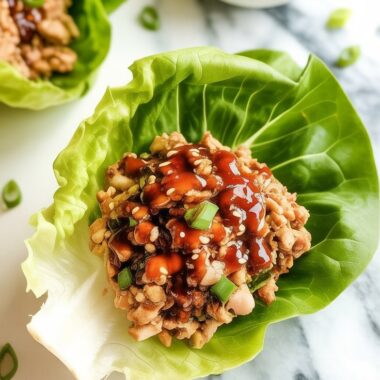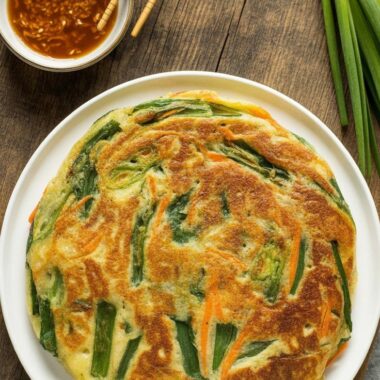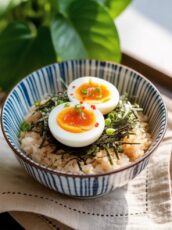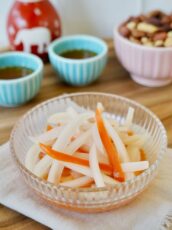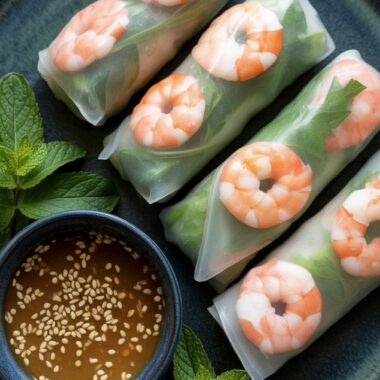There’s something incredibly comforting about a cake that jiggles when you shake it—like it’s giving you a happy little wave. That’s what I love about Taiwanese Castella Cake. It’s soft, airy, and bouncy with just the right amount of sweetness. I’ve baked this for birthdays, rainy Sundays, and even once at midnight when I just needed a slice of something fluffy and warm. It may look delicate, but this cake holds its own as a crowd-pleaser—especially with a dollop of whipped cream and fresh berries on the side.
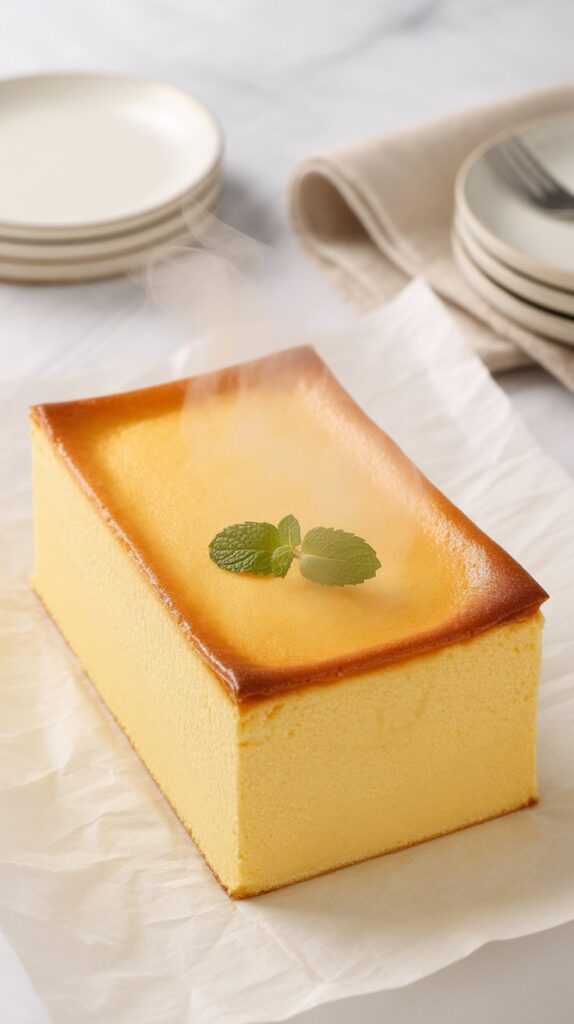
What Makes This Cake Special
Taiwanese castella isn’t your average sponge cake. It’s almost like a cross between a souffle and chiffon cake, with an ultra-fine crumb and that signature wobble we all can’t resist. Every bite just melts in your mouth.
It’s based on the Japanese castella cake but is much lighter and more pillowy. The baking process takes some care, but once you’ve made it once or twice, it becomes surprisingly easy. I always feel a little proud pulling this out of the oven—it’s one of those bakes that looks impressive even without any frosting or decoration.
Ingredients You’ll Need
Here’s everything I usually grab when I’m making this cake. Nothing fancy, just pantry staples that transform into something magical.
- Cake Flour – This gives the cake that melt-in-the-mouth texture. It’s lower in protein, so the crumb stays soft.
- Salt – Just a pinch to balance out the sweetness.
- Unsalted Butter – Adds a rich flavor and moisture to the batter.
- Milk – Whole milk works best here for that tender crumb.
- Large Eggs – The whites get whipped into a meringue, while the yolks add richness.
- Cream of Tartar – This helps stabilize the meringue.
- Vanilla Extract – A little splash goes a long way in cutting the egginess.
- Granulated Sugar – The main sweetener here—don’t skimp on it!
Simple Swaps and Add-Ons
Sometimes I like to experiment with this cake, especially when I’ve got extra ingredients on hand.
Substitutions
- No cake flour? Mix 1 cup all-purpose flour minus 2 tbsp, then add 2 tbsp cornstarch.
- No butter? Neutral oil like canola or grapeseed also works and keeps it extra moist.
- No cream of tartar? A splash of lemon juice or vinegar will help stabilize your meringue.
Flavor Additions
- Honey Castella – Add 2 tablespoons of honey to the yolk mixture.
- Chocolate Castella – Fold in 1/3 cup of sifted cocoa powder.
- Matcha Castella – Add a tablespoon of sifted matcha for a green tea twist.
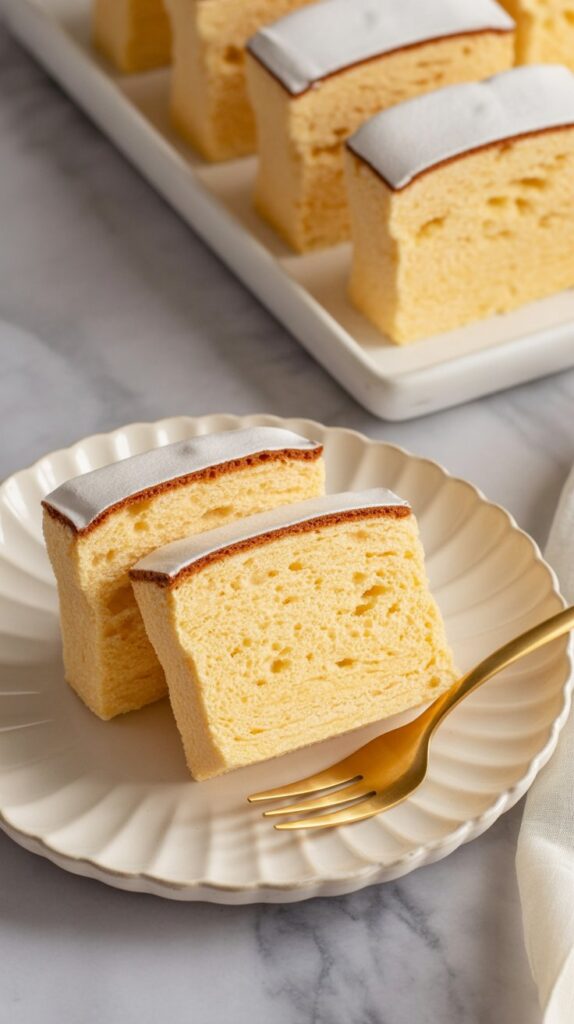
How I Make Taiwanese Castella Cake at Home
This cake takes a bit of patience but nothing too tricky. I always recommend reading through once before starting so you’re not scrambling halfway through.
1. Prep Your Pan and Oven
Preheat the oven to 300°F (150°C). Line an 8x8x3″ cake pan with parchment—make sure it overhangs an inch above the rim. If your pan isn’t leakproof, wrap it in foil. Get your water bath ready by heating water to around 175°F (79°C).
2. Sift the Dry Ingredients
Sift your cake flour and salt together into a big mixing bowl. This removes any clumps and helps keep the batter light.
3. Warm the Butter and Milk
In a saucepan, gently warm the butter and milk until the butter is just melted—don’t let it boil. About 120°F (49°C) is perfect.
4. Combine and Mix
Pour the warm butter and milk into your flour mixture and whisk it smooth. Add egg yolks one at a time, whisking each in fully. Then stir in the vanilla.
5. Whip the Meringue
Wipe your mixing bowl with vinegar to remove any grease, then beat egg whites and cream of tartar until foamy. Slowly add sugar in three parts, beating to soft peaks—white, glossy, and floppy when you lift the whisk.
6. Fold It Gently
Fold one-third of the meringue into the yolk mixture to lighten it. Then gently fold in the rest in two more additions. Be careful not to overmix—stop as soon as the batter is uniform in color.
Baking and Serving
Pour the Batter
Pour from about a foot above the pan—it helps burst large air bubbles. Give it a few taps on the counter and run a toothpick through to get rid of any extras.
Set Up the Water Bath
Place your cake pan into a larger pan and pour the hot water in, about halfway up the side. This gentle steam keeps the cake moist and prevents cracking.
Bake Low and Slow
Place the pan on the lower third rack and bake for 65–70 minutes. It’s ready when it’s golden brown and a toothpick comes out clean.
Cool and Slice
Let it sit for 2 minutes, then carefully lift it out and peel off the parchment. The cake will deflate slightly as it cools—totally normal. Slice and serve with berries or just eat it plain like I do when no one’s watching.
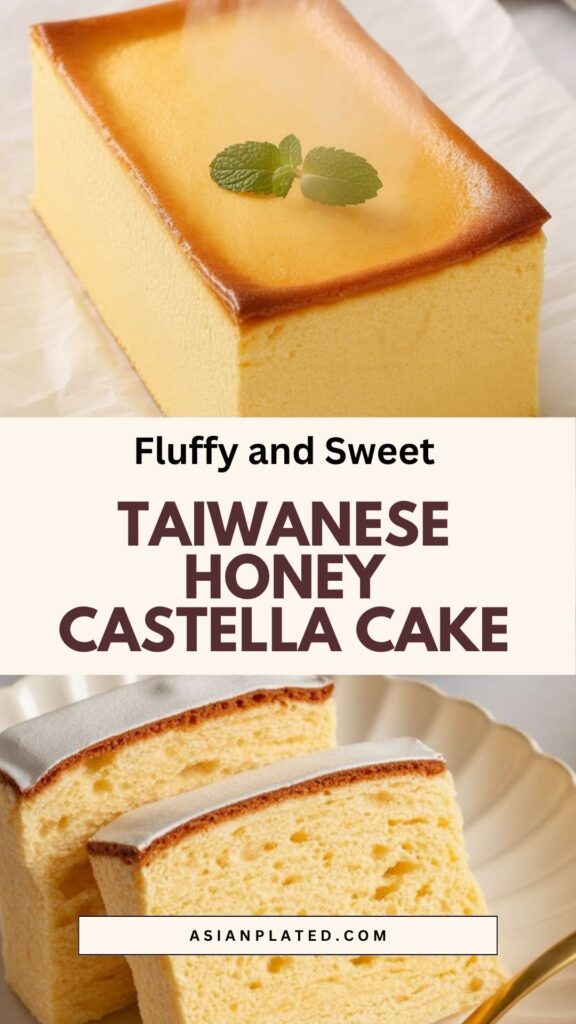
My Go-To Tips for the Best Texture
- Use a scale if you can. Accuracy matters with this kind of delicate cake.
- Don’t rush the meringue. Soft peaks are the sweet spot—too stiff and your cake will crack.
- Keep the folding gentle. I use a rubber spatula and work from the bottom of the bowl up.
- Keep the water warm, not boiling. You want slow, steady steam—not a sauna.
Meringue Tips That Help Every Time
- Always wipe your bowls clean. A swipe of vinegar gets rid of lingering oils.
- No plastic bowls. They hang on to grease even after washing.
- Room temperature eggs whip better. They’ll give you more volume and stability.
- Medium speed = fewer big bubbles. That keeps the cake top from cracking.
- Stop at soft peaks. Anything stiffer and the texture gets dry and puffy.
How to Store Your Castella Cake
This cake is best the day it’s baked. That warm, custardy bite is unbeatable. But if you do have leftovers:
- Fridge: Store in an airtight container for up to 3 days. Let it come to room temp before eating.
- Freezer: Wrap tightly in plastic wrap, pop it in a freezer-safe box, and freeze for up to 3 months. Thaw overnight in the fridge.
Taiwanese Honey Castella Cake
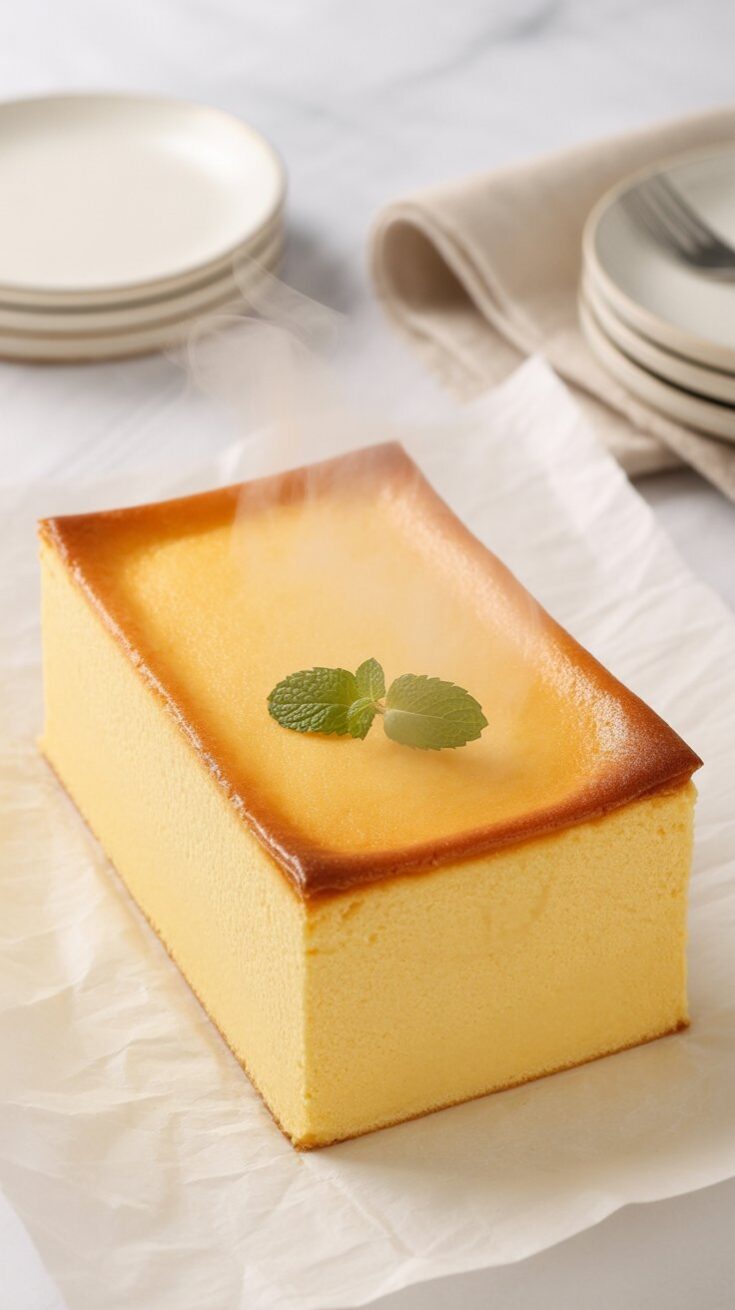
Light, airy, and gently sweet—this Taiwanese Castella Cake is everything you want in a sponge cake.
Ingredients
- 130 g (9 tablespoons) unsalted butter
- 130 g (1/2 cup + 2 teaspoons) whole milk
- 130 g (2/3 cup) granulated sugar
- 8 large eggs, separated (at room temperature)
- ½ tablespoon vanilla extract
- ½ teaspoon cream of tartar
- 130 g (1 cup) cake flour
- ¼ teaspoon salt
Instructions
- Preparing the Batter : Start by preheating your oven to 300°F (150°C). Line all sides of an 8x8x3-inch square pan with parchment paper, letting it extend an inch above the rim. If your pan has loose edges or isn't completely sealed, wrap the outside in foil to avoid leaks. Also, get a hot water bath ready by heating water to about 175°F (79°C).
- In a large bowl, sift the cake flour and salt to ensure a lump-free base.
- Warm the butter and milk together in a saucepan over medium heat until the butter just melts and the mixture becomes steamy (about 120°F or 49°C). Do not boil. Pour this warm mixture into the flour and whisk until fully incorporated.
- Now whisk in the egg yolks one at a time, mixing well after each addition. Stir in the vanilla extract until smooth and golden.
- Making the Meringue : Wipe down your mixing bowl and whisk attachment with a little vinegar to eliminate any grease—this helps the meringue whip up properly. Beat the egg whites and cream of tartar on low until they begin to foam. Gradually add the sugar in three parts, beating on medium speed. Continue until the meringue forms soft peaks that gently curl over when you lift the whisk.
- Gently fold a third of the meringue into your egg yolk mixture using a spatula, lifting and turning to preserve the air. Repeat with the remaining meringue in two more batches, folding until the batter is a uniform pale yellow with no streaks.
- Baking the Cake : Pour the batter into the prepared pan from a slight height (around 12 inches) to help eliminate large air pockets. Tap the pan lightly on the counter and run a toothpick through the surface to release any bubbles.
- Place the filled cake pan into a larger baking dish and pour the hot water into the larger pan until it comes halfway up the sides of the cake pan.
- Bake on the lower third rack of the oven for 65–70 minutes, or until the top turns golden brown and a toothpick inserted in the center comes out clean.
- Once baked, let the cake rest for 2 minutes. Carefully remove it from the pan, peel off the parchment paper, and let it cool slightly before slicing. It’s normal for the cake to deflate a little as it cools.
- This cake is best eaten fresh the same day—it’s when the texture really shines. If you have leftovers, store them in an airtight container in the fridge for up to 3 days. Just bring it to room temperature before serving.
- To freeze, wrap slices tightly in plastic wrap and store in a freezer-safe container for up to 3 months. Thaw overnight in the fridge.
Notes
- Use a kitchen scale. Precision matters for that perfect fluffy crumb.
- Don’t skip the parchment lining. It makes removing the delicate cake a breeze.
- Warm, not hot, butter-milk mix. Too hot and it’ll mess with your batter.
- Fold gently. You want to keep all that precious air in the batter.
- Stick with soft peaks. Stiff peaks can cause cracks on top.
- No plastic bowls. They can retain grease, which deflates meringue.
- Room temp eggs are a must. They whip up better and create more stable peaks.
Nutrition Information:
Yield: 10 Serving Size: 1Amount Per Serving: Calories: 9095Total Fat: 232gSaturated Fat: 138gTrans Fat: 9gUnsaturated Fat: 75gCholesterol: 799mgSodium: 2821mgCarbohydrates: 1447gFiber: 44gSugar: 220gProtein: 279g
Asianplated.com, occasionally offers nutritional information for recipes contained on this site. This information is provided as a courtesy and is an estimate only. This information comes from online calculators. Although allchickenrecipes.com attempts to provide accurate nutritional information, these figures are only estimates.
Frequently Asked Q&A
Why did my cake crack?
Usually, the meringue was over-whipped or the oven was too hot. Make sure your water bath is deep enough too.
Why did it deflate?
A little deflation is normal, but if it collapses a lot, it’s likely underbaked or the meringue wasn’t mixed in properly.
Is this like pound cake?
Not really. Pound cake is dense and buttery. Castella is feather-light, bouncy, and steamed in a water bath.
How is Taiwanese castella different from Japanese?
Japanese versions tend to be sweeter and denser with honey and bread flour. Taiwanese ones use cake flour and regular sugar for a softer, lighter texture.
This is one of those cakes that feels like a hug. It’s simple in ingredients but so satisfying in taste and texture. If you’re new to making it, give yourself a little grace—it gets easier every time. And honestly? Even if it cracks or deflates a little, it’ll still taste amazing.
Try other Taiwanese recipes:

